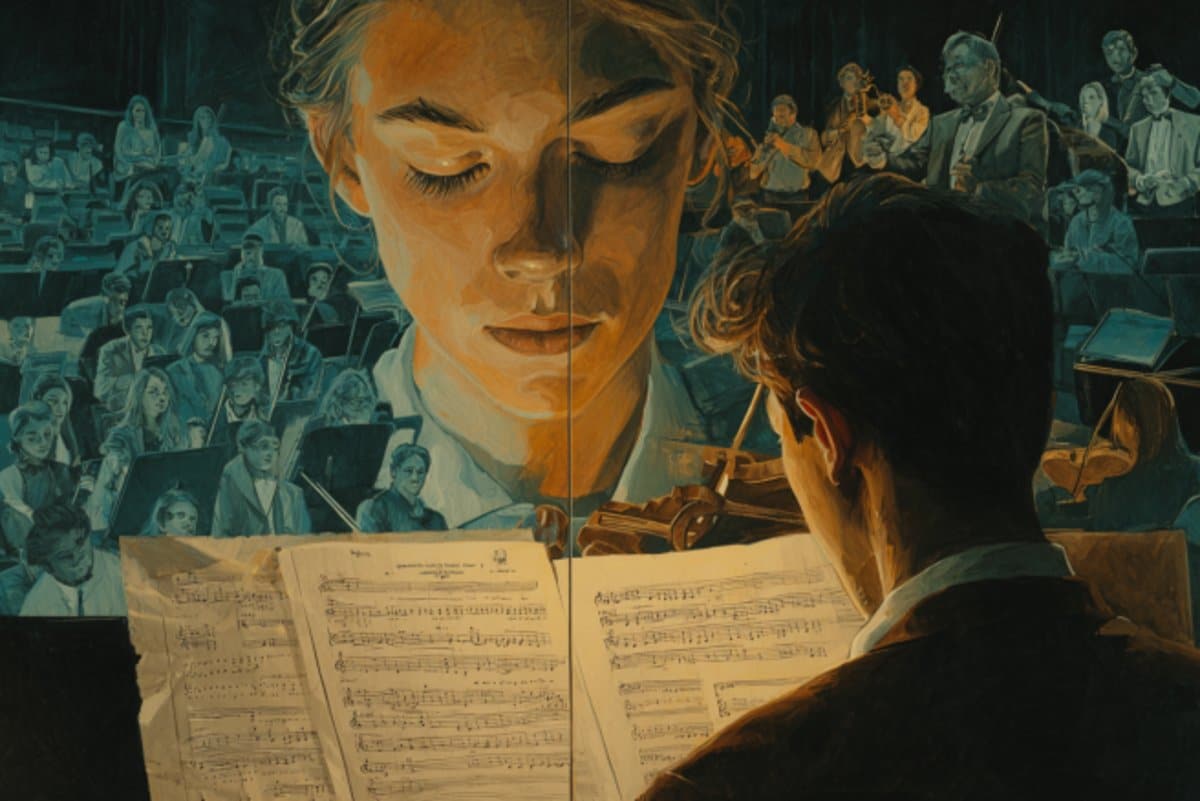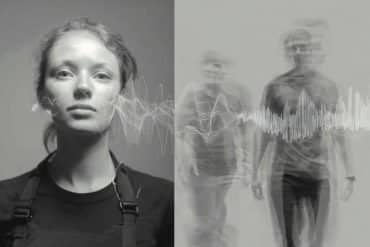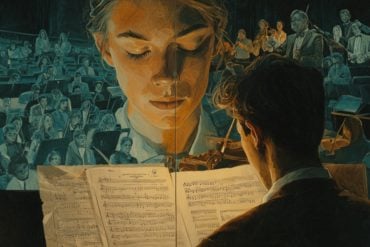Summary: A new study reveals that the “sight-over-sound” effect—where visual cues outweigh audio in judging music—depends heavily on the listener’s musical background. In experiments with Japanese brass band performances, general musicians relied more on visuals, while brass band specialists judged more accurately by sound alone.
Non-musicians showed no clear bias. The findings highlight how expertise shapes how we integrate sensory information and could help refine music education and competition judging.
Key Facts:
- Visual Bias Varies: Non-brass musicians showed a sight-over-sound bias, but brass musicians did not.
- Expertise Matters: Musical experience in a specific genre influences sensory weighting during evaluations.
- Methodological Rigor: Controlling performance quality and filming reduced overall visual dominance effects.
Source: KEIO
When we listen to a symphony, a jazz performance, or a pop song, we naturally tend to assume that our ears are the primary judges of quality.
For many people, music is primarily an auditory experience, and they instinctively believe that the true essence of a musical performance lies in factors such as its acoustic fidelity, proper intonation, or rhythmic precision.

Research has, however, revealed an intriguing phenomenon that challenges this assumption.
Dubbed as the “sight-over-sound effect,” this phenomenon suggests that visual aspects of a performer—from their stage presence to subtle body language cues—can unconsciously sway our judgment, sometimes even more powerfully than the music itself.
Despite its fascinating implications, the replicability of the sight-over-sound effect has remained debatable across musical styles and performance settings.
Previous research has struggled with accurately assessing visual influences, experiencing challenges with inconsistent filming angles, musical pieces, and definitions of musical experience among evaluators. Consequently, the understanding of the sight-over-sound effect and its extent remains unclear.
Against this backdrop, a research team led by Associate Professor Shinya Fujii, Director of the Neurosciences and Music Laboratory at Keio University and the Research Center for Music Science at Keio University Global Research Institute, Japan, conducted a comprehensive study to investigate the replicability of this effect.
The study was co-authored by Mr. Tomohiro Samma from the Graduate School of Media and Governance at Keio University and published online in the PLOS One journal on April 29, 2025.
The team meticulously investigated the replicability of the sight-over-sound effect, with a special focus on the role of the evaluators’ specific musical background.
To address the limitations of prior research, the researchers designed an experiment using recordings from Japanese high school brass band competitions. This allowed for significant control over the experimental stimuli. All selected bands had received gold awards, minimizing differences in skill level.
Most importantly, all performances within a comparison set featured the same musical piece filmed with consistent camera angles. 301 adults were included in the study, who were categorized into three groups: brass band musicians (BMs) with direct experience in the genre, non-brass band musicians (NBMs) with general musical experience but no brass band background, and non-musicians (NMs) with no formal musical training.
These groups evaluated brass band performances under audio-only, visual-only, or audio-visual conditions, selecting the band they believed would achieve the best competition results.
The study’s results revealed a markedly nuanced picture of the sight-over-sound effect. When analyzing the overall participant sample, the researchers found no significant evidence of the effect, suggesting that a careful control over visual elements and musical pieces could indeed reduce visual dominance. However, detailed subgroup analyses suggested a dependency on the evaluator’s musical experience.
Specifically, the sight-over-sound effect was observed in NBMs, who showed significantly higher accuracy in identifying winners from visual-only information. In contrast, the effect was absent in BMs, who demonstrated superior accuracy in the audio-only condition, indicating their ability to make precise judgments based solely on sound. The NM group did not exhibit the sight-over-sound effect either.
These findings carry significant implications for our understanding of multisensory integration and the practical aspects of music and music competitions. Firstly, the absence of the sight-over-sound effect in the overall sample highlights the importance of methodological rigor in future studies.
More importantly, varying results across the three groups underscore that specialized musical training can profoundly shape how individuals process and prioritize sensory information.
“Our study found that the sight-over-sound effect was observed only in NBMs, indicating its dependence on the evaluator’s specific musical experience, while BMs’ auditory training potentially mitigating visual influence,” explains Mr. Samma.
Additionally, the results are also relevant in social psychology and cognitive science in general, since they suggest that expertise in a given domain can alter one’s weighting of sensory inputs.
For instance, visual dominance observed in the NBM group suggests that while they possess musical skills, they may still rely on visual cues for evaluation if they lack experience in a given genre.
“By shedding light on the underexplored aspect of how evaluators’ musical experience influences the evaluation process in multisensory integration, this work has significant implications for various real-world aspects, such as music education, performance, and competition judging,” concludes Dr. Fujii.
Further work on this intriguing topic will hopefully help us improve music education and make competitions fairer.
About this music, auditory, and visual neuroscience research news
Author: Tomohiro Samma
Source: KEIO University
Contact: Tomohiro Samma – KEIO University
Image: The image is credited to Neuroscience News
Original Research: Open access.
“Sight-over-sound effect depends on interaction between evaluators’ musical experience and auditory-visual integration: An examination using Japanese brass band competition recordings” by Tomohiro Samma et al. PLOS One
Abstract
Sight-over-sound effect depends on interaction between evaluators’ musical experience and auditory-visual integration: An examination using Japanese brass band competition recordings
The sight-over-sound effect, in which visual information dominates auditory cues in musical evaluations, challenges the common belief that sound is the primary factor in music evaluation.
However, the replicability of the sight-over-sound effect remains controversial across different musical genres and contexts.
Here, we investigated the sight-over-sound effect using recordings from Japanese brass band competitions with carefully controlled musical pieces and camera angles.
Adult participants (age: 34.81 ± 11.71 years [mean ± standard deviation]) were divided into three groups based on their brass band and musical experience.
Of the 301 participants, 171 were brass band musicians (age: 33.08 ± 11.57 years), 78 were non-brass band musicians (age: 35.39 ± 13.03 years), and 52 were non-musicians (age: 39.15 ± 8.73 years).
The sight-over-sound effect was observed in non-brass band musicians (Kruskal–Wallis test: p < 0.001) but was absent in brass band musicians (p = 0.48) and non-musicians (p = 0.37).
These findings indicate that the sight-over-sound effect depends on musical experience; specifically, our results indicate that auditory training in brass band musicians may mitigate the visual influence.
Furthermore, the absence of the sight-over-sound effect in non-musicians suggests that without specific musical training, evaluators may not consistently prioritize visual information.
The present findings fill a critical gap in our understanding of multisensory integration, especially regarding how different levels of musical expertise shape evaluative processes across sensory modalities.
Our results underscore the need for educational and evaluative practices to consciously balance the influences of visual and auditory cues, particularly in situations in which visual dominance may overshadow auditory quality.






